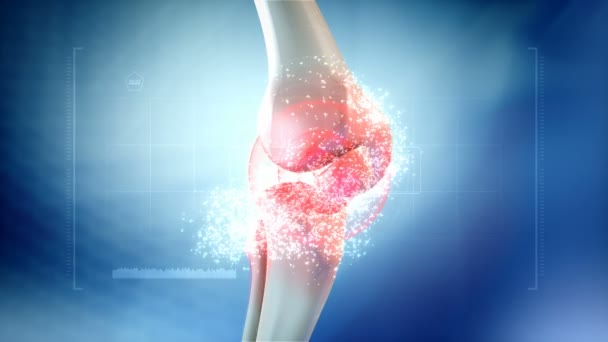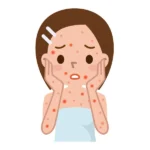Joint pain is a widespread problem that affects millions of individuals worldwide. It can affect any part of the body where two or more bones meet, such as the knees, hips, shoulders, elbows, wrists, ankles, or fingers. Joint pain can range from mild to severe and can interfere with daily activities and quality of life.
Causes of Joint Pain
Joint pain can have many different causes, depending on the type and location of the joint. Some of the most common causes are:
• Injury. Trauma to the joint from accidents, falls, sports, or overuse can cause damage to the bones, ligaments, tendons, cartilage, or bursae (fluid-filled sacs that cushion the joint). This can result in pain, swelling, bruising, stiffness, or reduced range of motion. Examples of joint injuries include sprains (stretching or tearing of ligaments), strains (stretching or tearing of muscles or tendons), fractures (breaking of bones), dislocations (separation of bones from their normal position), and bursitis (inflammation of bursae).
• Infection. Bacteria, viruses, fungi, or parasites can invade the joint and cause inflammation, pain, fever, redness, warmth, or pus. Examples of joint infections include septic arthritis (infection of the joint space), Lyme disease (infection caused by a tick bite), viral arthritis (infection caused by viruses such as hepatitis B or C, parvovirus B19, or HIV), fungal arthritis (infection caused by fungi such as Candida or Aspergillus), and parasitic arthritis (infection caused by parasites such as Toxoplasma gondii or Echinococcus granulosus).
• Disease. Various diseases and conditions can affect the joints and cause pain. Some of these are autoimmune disorders (when the immune system mistakenly attacks healthy tissues), metabolic disorders (when the body has problems with chemical reactions), degenerative disorders (when the joint wears out over time), or neoplastic disorders (when abnormal cells grow in or around the joint). Examples of joint diseases include rheumatoid arthritis (RA), osteoarthritis (OA), gout, lupus, psoriatic arthritis, ankylosing spondylitis, sarcoidosis, hemochromatosis, Paget’s disease of bone, and bone cancer.
Symptoms of Joint Pain
Joint pain can vary in intensity and duration depending on the cause and severity of the condition. Some common symptoms that may accompany joint pain are:
• Swelling. The joint may appear larger or puffy due to fluid accumulation or inflammation.
• Redness. The skin over the joint may become red or warm due to increased blood flow or infection.
• Stiffness. The joint may feel tight or hard to move due to reduced flexibility or scar tissue formation.
• Tenderness. The joint may feel sore or sensitive to touch or pressure due to irritation or damage to the tissues.
• Crepitus. The joint may make cracking, popping, or grinding sounds when moving due to friction between rough surfaces.
Diagnosis of Joint Pain
To diagnose the cause of joint pain, a doctor will usually perform a physical examination and ask about the history and symptoms of the condition. The doctor may also order some tests to confirm the diagnosis or rule out other possible causes.
Some of these tests are:
• Blood tests. These can measure the levels of certain substances in the blood that may indicate inflammation, infection, autoimmunity, or metabolic disorders. Examples of blood tests include erythrocyte sedimentation rate (ESR), C-reactive protein (CRP), rheumatoid factor (RF), antinuclear antibody (ANA), uric acid, and glucose.
• Joint fluid analysis. This involves taking a sample of fluid from the joint using a needle and syringe and examining it under a microscope or sending it to a laboratory for further testing. This can help identify the type and cause of infection, inflammation, or crystal formation in the joint.
• Imaging tests. These can provide detailed pictures of the bones, cartilage, ligaments, tendons, and bursae in and around the joint. They can help detect fractures, dislocations, arthritis, tumors, or other abnormalities. Examples of imaging tests include X-rays, ultrasound, computed tomography (CT) scan, magnetic resonance imaging (MRI), and bone scan.
Treatment of Joint Pain
The treatment of joint pain depends on its cause, severity, and impact on daily life. The main goals of treatment are to relieve pain, reduce inflammation, restore function, and prevent complications. Some common treatments for joint pain are:
• Medications. These can help reduce pain and inflammation in the joint. They can be taken orally, applied topically, or injected into the joint. Examples of medications include nonsteroidal anti-inflammatory drugs (NSAIDs) such as ibuprofen (Advil) or naproxen (Aleve), acetaminophen (Tylenol), corticosteroids such as prednisone or methylprednisolone, antibiotics for infections, antivirals for viral arthritis, antifungals for fungal arthritis, antiparasitics for parasitic arthritis, disease-modifying antirheumatic drugs (DMARDs) such as methotrexate or hydroxychloroquine for RA, biologic agents such as etanercept (Enbrel) or adalimumab (Humira) for RA or psoriatic arthritis, and colchicine or allopurinol for gout.
• Physical therapy. This involves exercises and stretches that can help improve the strength, flexibility, and range of motion of the joint. It can also help reduce pain and stiffness and prevent further damage to the joint. A physical therapist can design a personalized program that suits the needs and goals of each patient.
• Occupational therapy. This involves learning how to perform daily activities in a way that reduces stress on the affected joint. It can also help with adapting to assistive devices such as braces, splints, or walkers that can support and protect the joint. An occupational therapist can provide guidance and recommendations on how to cope with joint pain and improve quality of life.
• Surgery. This is usually reserved for severe cases when other treatments have failed to provide adequate relief or when there is significant damage to the joint. Surgery can involve repairing, replacing, or removing the affected joint or part of it. Examples of surgical procedures include arthroscopy (inserting a thin tube with a camera and instruments into the joint), arthroplasty (replacing the joint with an artificial one), arthrodesis (fusing the bones of the joint together), and synovectomy (removing the inflamed lining of the joint).
Home Remedies for Joint Pain
In addition to medical treatment, there are some home remedies that can help ease joint pain and improve comfort. Some of these are:
• Rest. Taking a break from activities that aggravate the joint can help reduce pain and inflammation and prevent further injury. However, too much rest can also cause stiffness and weakness in the joint, so it is important to balance rest and activity.
• Ice. Applying a cold pack or ice wrapped in a towel to the joint for 15 to 20 minutes several times a day can help numb the pain and reduce swelling. Do not apply ice directly to the skin or for longer than 20 minutes at a time, as this can cause frostbite or nerve damage.
• Heat. Applying a warm compress or heating pad to the joint for 15 to 20 minutes several times a day can help relax the muscles and increase blood flow to the area. Do not apply heat if there is an infection or open wound in the joint, as this can worsen the condition. Also, avoid using heat for longer than 20 minutes at a time or on high settings, as this can cause burns or skin damage.
• Massage. Gently rubbing or kneading the muscles around the joint can help relieve tension and improve blood circulation. It can also stimulate the release of endorphins, natural painkillers produced by the body. A professional massage therapist can provide a more thorough and effective massage, but self-massage can also be beneficial.
• Herbs and supplements. Some natural substances may have anti-inflammatory, analgesic, or antioxidant properties that can help with joint pain. However, these substances may also have side effects or interactions with other medications, so it is advisable to consult with a doctor before using them. Some examples of herbs and supplements that may help with joint pain are turmeric, ginger, garlic, omega-3 fatty acids, glucosamine, chondroitin, and vitamin D.
When to See a Doctor
Joint pain is usually not a medical emergency, but it can be a sign of a serious condition that requires prompt diagnosis and treatment. Some situations when it is advisable to see a doctor for joint pain are:
• The pain is severe, sudden, or unexplained.
• The pain is accompanied by fever, chills, rash, weight loss, or other signs of infection or systemic illness.
• The pain is caused by an injury that results in deformity, instability, or inability to move the joint.
• The pain persists for more than six weeks despite home remedies and OTC medications.
• The pain interferes with daily activities and quality of life.
Summary
Joint pain is a common complaint that can affect any part of the body where two or more bones meet. It can have many different causes, such as injury, infection, disease, or arthritis. Joint pain can vary in intensity and duration depending on the cause and severity of the condition. Joint pain can be treated with medications, physical therapy, occupational therapy, surgery, or home remedies depending on its cause and impact on daily life. Joint pain can be prevented by avoiding exposure to allergens or irritants that trigger it, quitting smoking, getting vaccinated against preventable diseases, practicing good hygiene habits, and maintaining a healthy weight and lifestyle.



